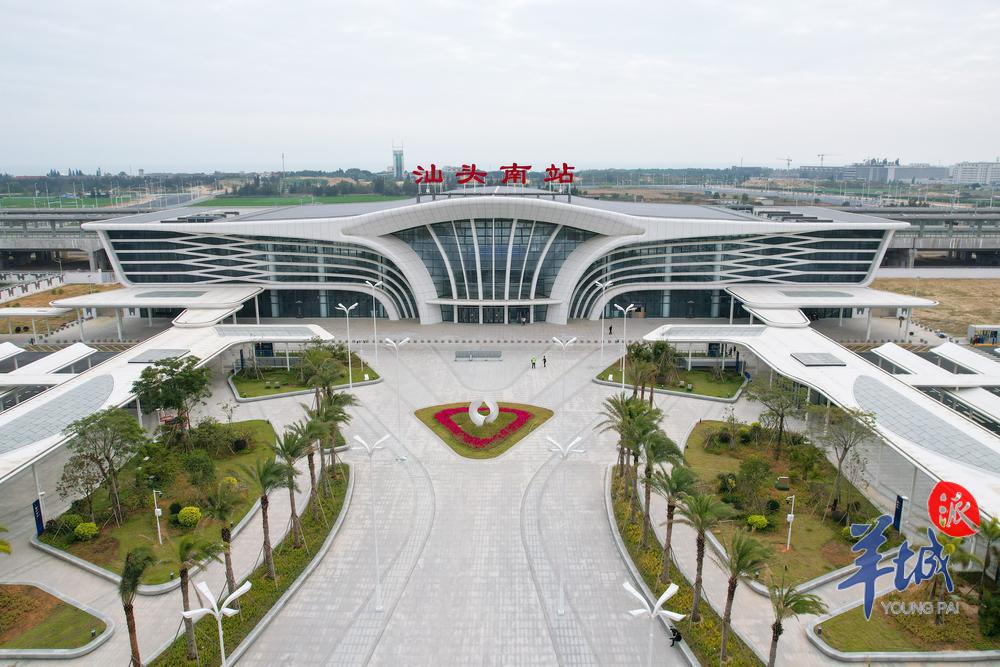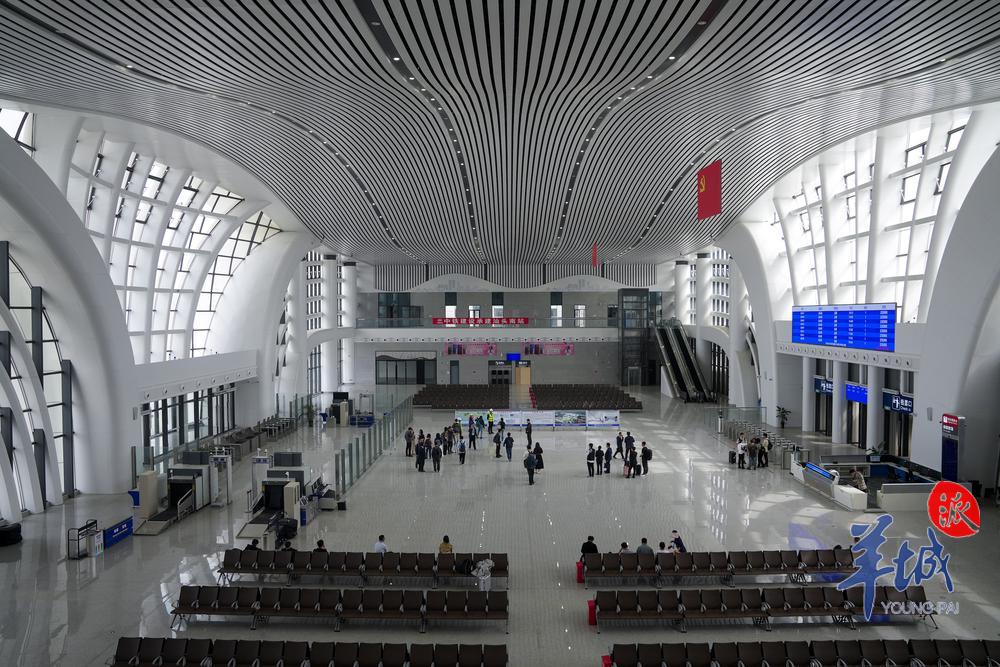
As 2023 draws to a close, the high-speed railway mileage of Guangdong Province has once again hit new heights. On December 26th, the section from Shantou South to Shanwei of the Shantou-Shanwei High-speed Railway officially commenced operations, adding a new major transportation route to the eastern part of Guangdong.

The travel time from Shantou South to Shanwei, Guangzhou East, and Shenzhen North stations is now reduced to a minimum of 36 minutes, 113 minutes, and 109 minutes, respectively. However, the significance of the Shantou-Shanwei High-speed Railway goes beyond that. Its inauguration has propelled Guangdong to become the first province in China with a high-speed railway mileage exceeding 3,000 kilometers.
Data indicates that by the end of 2022, Guangdong had operated a total of 2,788 kilometers of high-speed railway lines with speeds exceeding 200 kilometers per hour.
In 2023, Guangdong opened two new high-speed railway lines. The first was the Guangzhou-Shanwei High-Speed Railway, which commenced operations on September 26th, covering a total length of 200 kilometers. The second was the Shantou-Shanwei High-speed Railway, which opened on December 26th, spanning a total length of 142 kilometers. Based on these additions, the total mileage of high-speed railway lines in Guangdong has now reached 3,130 kilometers, surpassing the 3,000-kilometer threshold ahead of any other province in China. This leads to a clear advantage of 323 kilometers over Shandong, which currently ranks second in terms of total high-speed railway mileage with 2,807 kilometers.

In recent years, railway construction in Guangdong has been in rapid development. With the opening of the Ganzhou-Shenzhen High-Speed Railway on December 10th, 2021, Guangdong achieved the goal of "connecting every city with high-speed railway". Currently, Guangdong is vigorously advancing the construction of major railway corridors such as the Meizhou-Longchuan High-Speed Railway, Guangzhou-Zhanjiang High-Speed Railway, and Shenzhen-Jiangmen High-Speed Railway, bravely forging ahead towards the goal of "connecting every city with high-speed railway of 350 kilometers per hour". It can be foreseen that the extensive railway network will continue to expand across the land of southern Guangdong.
Furthermore, Guangdong recently released a development plan for the construction of five urban clusters, emphasizing the requirement for mutual interaction and integrated development among cities within and outside each urban cluster. The establishment of a dense transportation network, including railways, serves as the foundation and prerequisite for achieving this interconnected objective.

The development of the "GBA on the Rail" is transitioning from a blueprint to reality. It is projected that by the end of the 14th Five-Year Plan period (2025), the railway mileage in Guangdong will reach 6,350 kilometers, representing an increase of 1,480 kilometers or 30.3% compared to the end of the 13th Five-Year Plan period (2016-2020). Among them, the high-speed railway mileage will reach 3,380 kilometers, accounting for 53.2% of Guangdong's total railway mileage. By then, Guangdong will have established a high-speed railway network that enables travel from Guangzhou to various cities in the Pearl River Delta within one hour, to other prefectural-level cities within two hours, to neighboring provincial capitals within three hours, and to major cities in the Beijing-Tianjin-Hebei region, Yangtze River Delta, as well as southwestern cities in China within six to eight hours.
Source:Yangcheng Evening News
广东成全国首个高铁里程迈过3000公里的省份
在2023年即将结束之际,广东高铁里程数再次刷新。12月26日,汕头至汕尾高铁(以下简称“汕汕高铁”)汕头南至汕尾段正式开通运营,粤东地区由此新增一条客运大通道,汕头南至汕尾、广州东、深圳北站间最快分别36分钟、113分钟、109分钟可达。但汕汕高铁的意义远不止如此,它的开通,还让广东一跃成为全国首个高铁里程迈过3000公里的省份。
数据显示,截至2022年底,广东200km/h以上标准高快速铁路运营里程达到2788公里。
在2023年,广东新开通两条高铁,分别是9月26日开通的广汕高铁(全长200公里)和12月26日开通的汕汕高铁汕尾至汕头南段(全长142公里)。据此计算,广东高铁运营总里程已达3130公里,在全国率先跨过3000公里台阶,比目前高铁运营总里程排名第二的山东(2807公里)要多出323公里,领先优势可谓明显。
近几年,广东的铁路建设不断提速:2021年12月10日,赣深高铁的开通,让广东实现了“市市通高铁”的目标;目前,广东正全力推进梅龙高铁、广湛高铁、深江高铁等铁路大通道的建设,朝着“市市通350高铁”目标奋勇前行。可预见的是,四通八达的铁路交通线将在南粤大地越织越密。
此外,广东近日发布建设五个都市圈的发展规划,提出了都市圈内城市以及与其他都市圈之间相互联动、融合发展的要求,而织密铁路等交通网则是实现联动目标的基础和前提。
“轨道上的大湾区”正从蓝图变为现实。预计到“十四五”末,广东铁路里程达到6350公里,较“十三五”末增加1480公里、增长30.3%,其中高速铁路达到3380公里、占广东铁路的53.2%。届时,广东省将建成广州与珠三角地区各城市1小时通达、与省内其他地级城市2小时内通达,与邻近省会城市3小时内通达,与京津冀、长三角地区和西南主要城市6-8小时通达的高速铁路网络。
文|记者 李志文 董鹏程 胡彦
译|陈萱
-
Rare full moon in eighteen years occur in 2023
2023-12-26 22:40:35 -
Special exhibition marks the 40th anniversary of the discovery of Nanyue King Wen's Mausoleum
2023-12-26 22:40:53 -
Zhejiang girl sparks interest in oracle bone inscriptions through popular science
2023-12-25 23:58:45 -
With chilly winter comes "heating economy"
2023-12-25 23:58:53






